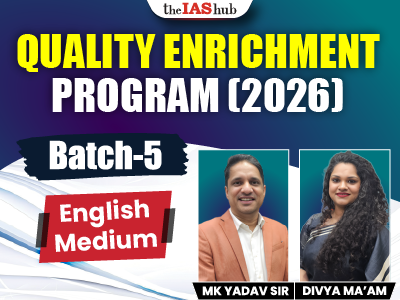Learn about the AMRUT Scheme, its objectives, full form, and key details. Discover how AMRUT 2.0 aims to improve urban infrastructure and which ministry oversees it.

The AMRUT Scheme is a flagship initiative by the Government of India to improve urban living conditions. Launched in 2015, it focuses on providing basic amenities like water supply, sewage management, and green spaces in cities. With the introduction of AMRUT 2.0, the scheme has expanded its goals to create smarter, more sustainable cities.
The Atal Mission for Rejuvenation and Urban Transformation (AMRUT) was launched on June 25, 2015, targeting 500 cities and towns across India. The mission aims to improve basic infrastructure in these areas, focusing on water supply, sewerage and septage management, storm water drainage, green spaces and parks, and non-motorized urban transport. To support sustainable urban development, the mission also includes a range of urban reforms and capacity-building initiatives.

The Atal Mission for Rejuvenation and Urban Transformation (AMRUT) is a government program designed to enhance infrastructure in Indian cities. It aims to ensure every urban household has access to:
AMRUT Scheme Full Form and Launch Date
| Attribute | Detail |
| Full Form | Atal Mission for Rejuvenation and Urban Transformation (AMRUT) |
| Launch Date | June 25, 2015 |
The scheme is named after former Prime Minister Atal Bihari Vajpayee, honoring his contributions to urban development.
Also Read: UPSC Mains Question Paper
The primary goals of the AMRUT Scheme include:
By focusing on these areas, the scheme aims to make cities more livable and sustainable.
The AMRUT Scheme follows a structured approach:
Also Read: Sociology optional syllabus
The Atal Mission for Rejuvenation and Urban Transformation (AMRUT) 2.0 was launched on October 1, 2021, for a five-year period from the financial year 2021-22 to 2025-26. The scheme aims to ensure universal water supply coverage through functional taps in all statutory towns across the country and improve sewerage and septage management in the 500 cities covered during the first phase of AMRUT.
AMRUT 2.0 focuses on promoting a circular economy of water by developing a City Water Balance Plan (CWBP) for each city. This plan emphasizes recycling and reusing treated sewage, revitalizing water bodies, and conserving water. It guides cities in identifying projects that support functional tap connections, conserving water sources, rejuvenating water bodies and wells, reusing treated wastewater, and harvesting rainwater. The mission envisions making cities “water secure” by adopting a circular water economy.
Additionally, AMRUT 2.0 includes reforms to enhance citizens’ ease of living by reducing non-revenue water, recycling treated wastewater, reviving water bodies, improving urban planning, strengthening urban finance, and implementing double-entry accounting systems.
AMRUT 2.0 aims to make cities water-secure and pollution-free by 2026.
Also Read: UPSC Exam Syllabus
AMRUT 2.0 also includes several key components to enhance water management and promote sustainability:
The answer to question AMRUT comes under which ministry is Ministry of Housing and Urban Affairs (MoHUA). The ministry works with:
This ensures smooth implementation and accountability.
Also Read: Digital Arrest
The AMRUT Scheme has significantly improved urban infrastructure in India. With AMRUT 2.0, the focus is now on sustainability, digital governance, and climate resilience. Managed by the Ministry of Housing and Urban Affairs, this initiative is a key step toward making Indian cities more livable and eco-friendly.
As the scheme progresses, citizen participation and efficient governance will be crucial for its long-term success.
Are you preparing for UPSC 2025? Join IAShub’s UPSC coaching batches to boost your preparation. Enroll now!
The AMRUT Scheme was launched on June 25, 2015, by the Government of India under the Ministry of Housing and Urban Affairs (MoHUA).
The primary objectives include providing tap water connections, improving sewage and septage management, developing green spaces, enhancing public transport, and promoting sustainable urban living.
AMRUT 2.0 is the second phase of the AMRUT Scheme, launched in 2021, focusing on universal water supply, water conservation, sewage treatment, and making cities water-secure through sustainable urban planning.
The AMRUT Scheme comes under the Ministry of Housing and Urban Affairs (MoHUA), which works in collaboration with state governments and local urban bodies for its implementation.


Refine your answer writing skills and elevate your UPSC preparation with personalized support and expert feedback.
Fill out the form to get started with the program or any other enquiries !








Are you dreaming of becoming an IAS officer? Then, IAShub can be your best guide. It is one of the Best IAS Coaching in Delhi. Many students who want to clear the UPSC exam join IAShub for learning. The institute gives both online and offline classes. Their teachers are experienced and helpful. They easily explain every topic. Students also get notes, tests, and tips to do well in the exam.
IAShub is in Delhi and is trusted by many UPSC students. It offers coaching for every part of the UPSC exam – Prelims, Mains, and Interview. The classes are simple and easy to understand. The teachers are experts and guide students in the right way. IAShub is also known for its helpful notes, test series, and answer-writing practice. IAShub is the best coaching in Delhi and also gives UPSC Online Classes. This helps students from any place in India to learn. The online classes are live and also recorded. So, students can watch them anytime. These classes cover the full UPSC syllabus.
Here are some important services provided by IAShub:
The UPSC Civil Services Exam has three parts:
This exam is tough, but with the right guidance, it becomes easy to manage. Students must study smart and stay regular.
IAShub supports students from the beginning to the end. It gives the right books, tests, and notes. The classes are easy to follow, and the teachers are always ready to help. Students get personal doubt sessions too. The test series and answer checking help students learn where they need to do better. Also, free study materials save time and money.
IAShub also guides students during the final stage – the interview. Experts take mock interviews and give useful tips. This full support makes IAShub one of the best IAS coaching in Delhi.
